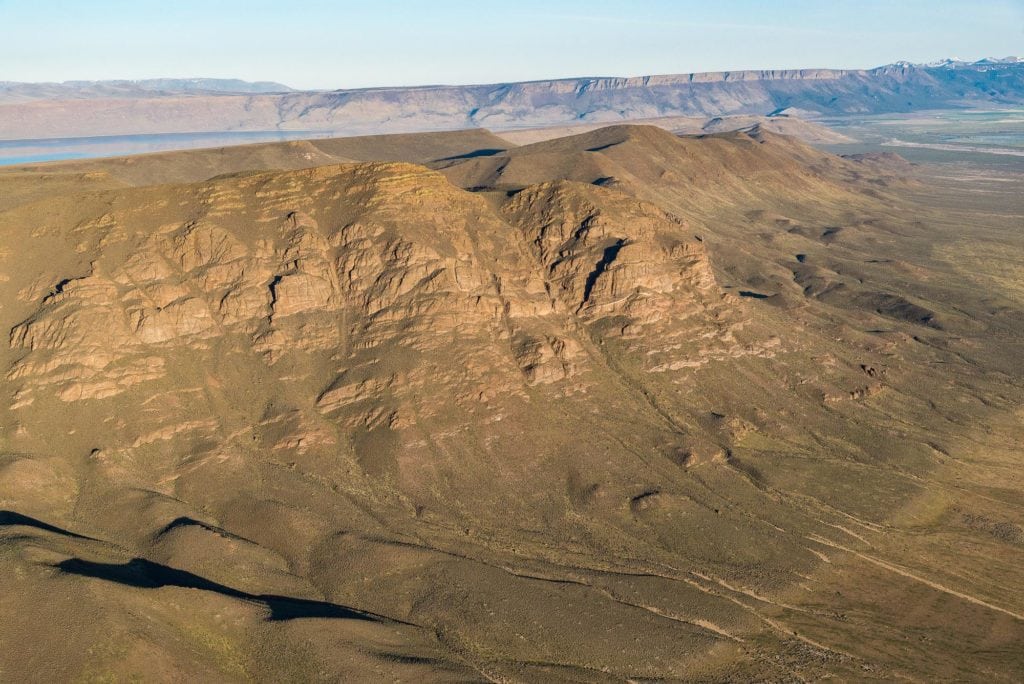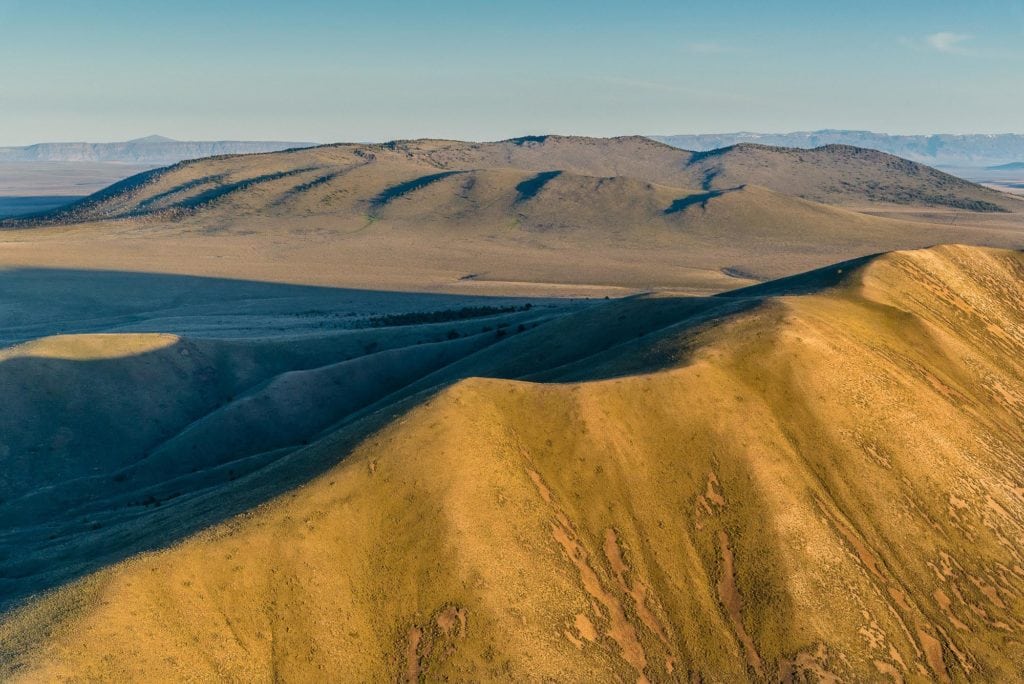Oregon Natural Desert Association employee Jeremy Austin realizes a childhood dream, and takes to the sky across southeastern Oregon with LightHawk. Photos by Jim Davis with aerial support by LightHawk.
If you could have any superpower, what would it be?
As kids growing up, we used to ask ourselves this question almost daily. For me the answer was simple, I wanted the ability to fly. There is something about watching a bird fly overhead, taking in the unique perspective from the sky, that leaves me feeling jealous. When viewed from above the land can tell us so much about our surroundings, so much that may be missed from the ground. The non-profit, LightHawk, has been working around this idea for decades.
Since 1979, LightHawk has donated “flights to elevate conservation,” utilizing the powerful perspective of flight to bring awareness to conservation issues across the United States. Thanks to LightHawk’s dedication to conservation and the generosity of our volunteer pilot, Dan, ONDA member and photographer Jim Davis and I had the amazing opportunity to experience the unique perspective of flight and use it to bring awareness to wilderness quality lands in southeastern Oregon’s desert.
Coglan Buttes. Photo by Jim Davis.
Eastern Oregon is dotted with places the average Oregonian has never heard of. Places like the Coglan Buttes, Diablo Rim, and Guano Slough. Places that are hard to reach, difficult to explain and above all, inspiring to see.
ONDA’s work that helps to bridge the gap between the known and the unknown with the combination of great photography and good storytelling. As the saying goes, “a picture speaks a thousand words.” So we set out to capture images that would speak to the importance of managing public lands to preserve wilderness values.
The locations we photographed are not designated as wilderness or wilderness study areas.
They are areas that ONDA has inventoried and found to have the characteristics essential to wilderness as described in the 1964 Wilderness Act. The Bureau of Land Management (BLM) has a specific name for lands the agency has inventoried and found to meet those requirements: “Lands with Wilderness Characteristics,” or LWCs for short. The BLM is not required by the Wilderness Act to preserve wilderness values in LWC units. However, the BLM can choose to manage these areas to retain their wilderness values through what is known as a Resource Management Plan (RMP), a document that guides land uses on BLM managed lands for 15 to 20 year periods.
Currently, the BLM is revising an RMP in southeast Oregon and is considering how best to manage lands with wilderness characteristics. The photographs we captured on our flight provide an additional perspective, highlighting how important it is to manage these lands in a way that preserves their wilderness values for current and future generations to enjoy.
Grays Butte and Juniper Mountain. Photo: Jim Davis
As we took to the air, the geology of eastern Oregon played out before us like a catalog of geological processes. Moonscape sand dunes, u-shaped mountains, and leopard-patterned buttes painted pictures of past events that the uninformed can only guess at. I have had the pleasure of exploring many of these areas on the ground; meandering along isolated draws, skirting around lapping lakes and clambering over lichen encrusted rimrock. But from the air, the landscape takes on a new personality. The connectivity of rock formations, plant communities, and water brings together a wholeness that can be overlooked from the ground. My hope is that the aerial perspective helps convey the importance of these lands to the public and land managers alike, contributing to the dialogue about wilderness values on the landscape.
As the wings of Dan’s Cessna T210L safely maneuvered us from one area to the next, and the quick-fire clicks of Jim’s camera shutter were swept out the window, I thought about the responsibility bestowed upon all us—the responsibility to be good stewards of the land. Future generations will look back and judge us by our collective actions. It is our responsibility to ensure that we manage our resources sustainably.
One of our greatest assets is the expanse of western public lands we manage in common. It is our responsibility to speak up and work together to preserve what remains of these places and to reconnect with what it means to be wild.
GET INVOLVED and raise your voice about the importance of preserving wilderness values.
And one last thing: if you could have any superpower, what would it be?
Post by Jeremy Austin, Greater-Hart Sheldon Coordinator for Oregon Natural Desert Association. Thanks to LightHawk for aerial support on this project.

